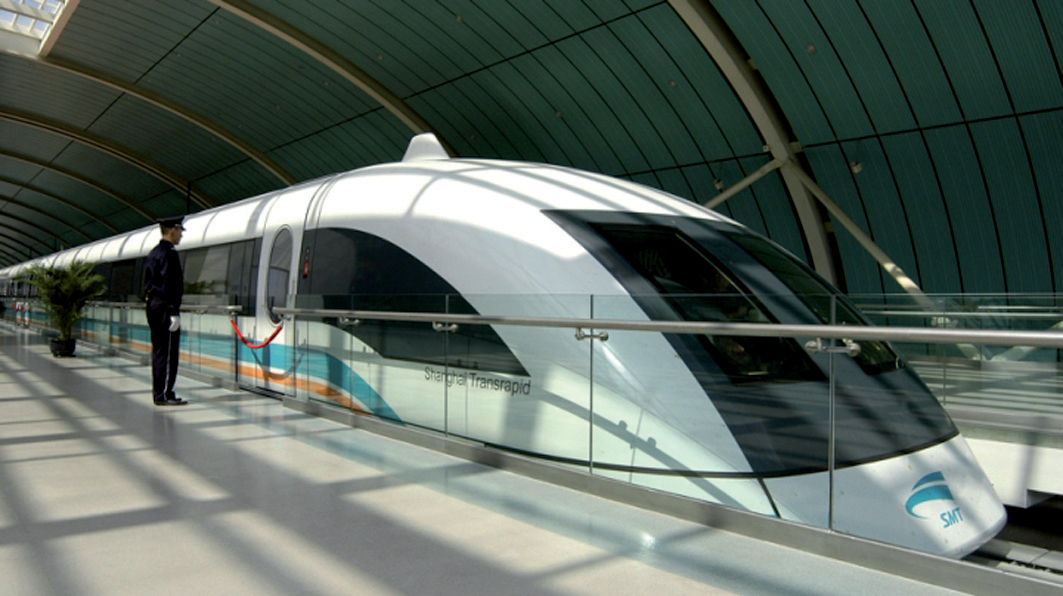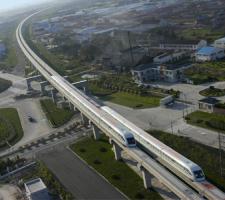
The Shanghai maglev has transported a total of 33 million passengers since its introduction, traveling daily at speeds of 430km/h (267mph)
Magnetic levitation has been dismissed as unproven, too costly, or pie in the sky. It's time to reappraise it
With the Chinese announcement, and the success of the system operating in Shanghai, the most frequent reason for discounting maglev technology out of hand as 'unproven' cannot be sustained.
Since the
This year, work will begin on extending the Shanghai maglev line to the tourist city of Hangzhou, some 200km (124 miles) away.
Journey time will be just half an hour.
If the Chinese experience of transporting 33 million passengers by maglev debunks the 'unproven technology' contention, then what about the next most popular reason - cost - that has been used to dismiss it? Again, the Shanghai experience debunks that argument. The entire 30km Shanghai maglev system, including vehicles, maintenance facility and stations cost US$1.2 billion, despite being built on very unstable soil that required extensive pile driving. Since its construction in 2001, new designs, materials and construction techniques have lowered the guideway costs by a whopping 30 per cent. In other words, current deployment costs for maglev need to be reappraised. As has happened in the UK.
The UK Government is currently reviewing a report from
Meanwhile, in California, the proposed DesertXpress 'high-speed' rail link between Victorville (some 60km from Los Angeles) and Las Vegas wouldn't actually qualify as high speed. (The internationally recognised standard for high-speed rail is a cruising speed above 240km/h (150 mph)).
Kevin C. Coates, an active International Maglev Board member, transportation & energy policy consultant and the CEO of the
"Why build a slow, noisy, polluting and expensive-to-maintain train - a throwback to the 19th century - when we can build a sustainable high-tech bridge to the 22nd century?" he asks. "Maglev is the most cost-effective high-speed system ever invented because of its extremely low maintenance and low lifecycle costs. In other words, maglev is the perfect definition of 'sustainable', both from a maintenance and economics standpoint." It is also a new technology that will build the foundation for the next era of economic growth in America, Coates believes.
Which brings us back to the developments in China: according to an International Maglev Board statement, China's unveiling of its own maglev train signals a predictable shift in its interests from simply being a user of foreign technology to becoming a manufacturer with unique and sellable know-how.
"Having apparently mastered the manufacturing and assembling of vehicles and many of their internal components, the next step is to gain the engineering expertise to reproduce the all-important levitation, guidance and propulsion functions, not just building the mechanical subsystems, but testing and integrating them for reliable operation in daily service at worldclass speeds. To date, only Germany and Japan have mastered the art and science of high-speed maglev," the statement adds.






